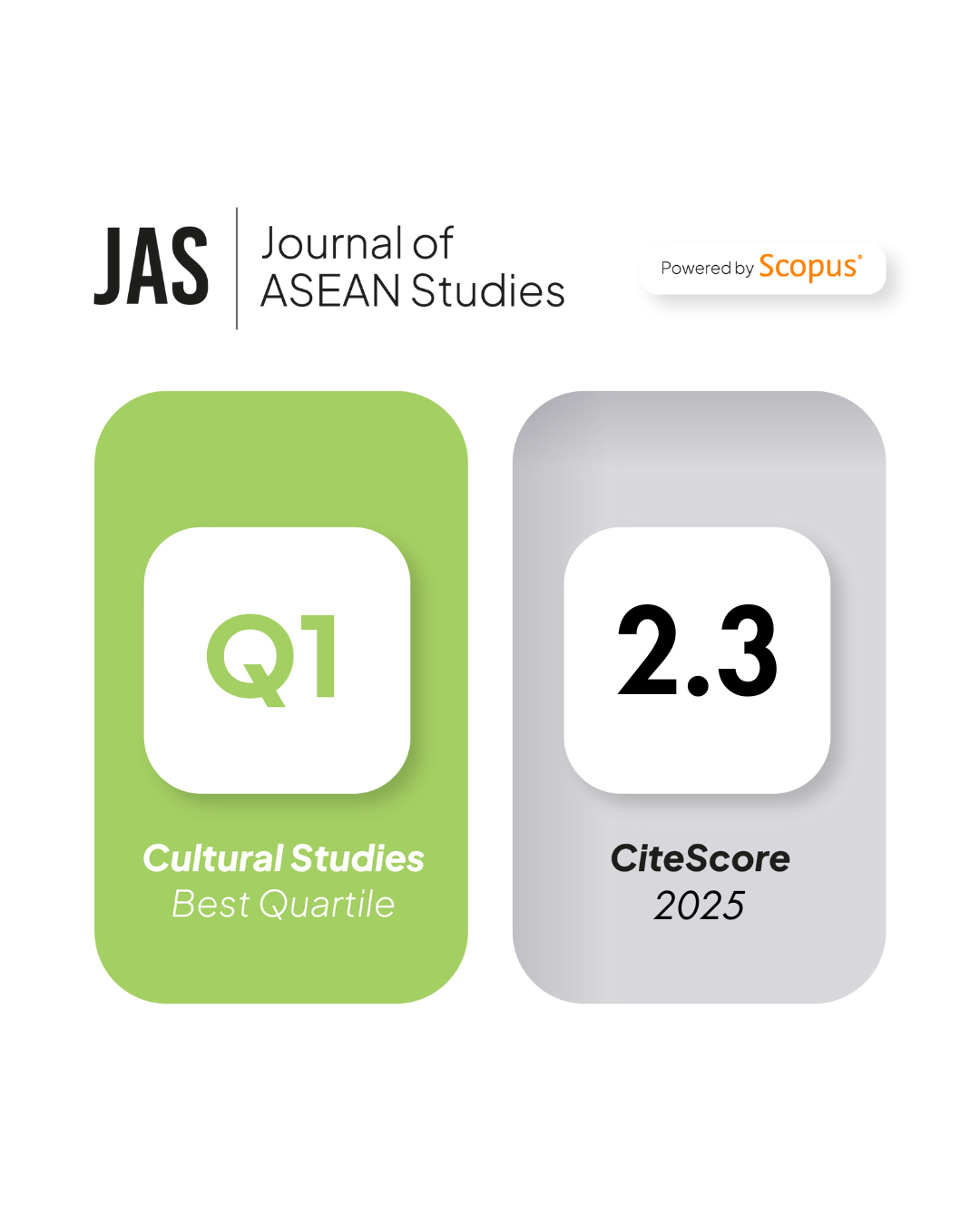Rethinking Refugees as Economically Isolated: The Rohingyas Participation in Informal Economy in Klang Valley, Malaysia
DOI:
https://doi.org/10.21512/jas.v5i2.3664Keywords:
Rohingya, refugees, informal economy, livelihoodAbstract
Unlike economic migrants, the refugee population is often portrayed as a burden to hosting governments. They are seen to be economically passive and highly dependent on the hosting government’s generosity and international organizations and donors’ humanitarian assistances. In Malaysia, refugee population including the Rohingyas are no longer living in sprawling tents, isolated villages or any refugee settlement in remote areas. They make their way to semi-urban and major city areas in search of economic opportunities to make a living while waiting for durable solutions accorded to them. The absence of the right to work coupled with the mounting pressure to make a living caused the Rohingyas to engage in informal economy, undertaking a variety of occupations and income-generating activities albeit risks of arrest and exploitation. This study aims to analyze the relationship between the Rohingyas’ participation in informal economy and their livelihood. Resulting from two series of field works engaging the Rohingyas in Klang Valley between 2013 and 2016, the study found that despite the absence of their right to work, the Rohingyas persistently entered into informal labor market as temporary, unskilled and low wage workers in various sectors such as trade, services and automotive. For the self-employed Rohingyas, they tend to engage in small-scale and unregulated income generating activities. Their goods and services are offered beyond the needs of the Rohingyas but to a larger extent of consumers including other migrant groups and local community. The Rohingyas’ active participation in informal economy is an attempt to not dependent or less depend on the UNHCR’s assistance and government’s generosity. This debunks the misconception that the Rohingya population in Malaysia are physically and economically isolated from the domestic economic structure.References
Azharudin, M. D. & Azlinariah, A. (2012). Air Mata Kesengsaraan Rohingya: Identiti, Penindasan Dan Pelarian. Kuala Lumpur: Inteam Publishing.
Chambers, R. & Conway, G. R. (1991). Sustainable Rural Livelihoods: Practical Concepts for the 21st Century. Retrieved from http://www.ids.ac.uk/publication/sustainable-rural-livelihoods-practical-concepts-for-the-21st-century
Community Links & the Refugee Council. (2011). Understanding the Informal Economic Activity of Refugees in London. Retrieved from http://www.refugeecouncil.org.uk/assets/0001/7060/GLA_report.pdf
Equal Rights Trust. (2014). Equal Only in Name: The Human Rights of Stateless Rohingya in Malaysia. Retrieved from http://www.equalrightstrust.org/ertdocumentbank/Equal%20Only%20in%20Name%20-%20Malaysia%20-%20Full%20Report.pdf
Federal Government of Malaysia. (1957/63). Immigration Act (Act 155), Putrajaya: Government of Malaysia.
Hoffstaedter, G. (2016). Is Working Legally A Win-Win for Refugees in Malaysia? Pilot Scheme A Step in the Right Direction. Retrieved from http://www.policyforum.net/working-legally-win-win-refugees-malaysia/
Hussmanns, R. (2004). Measuring the Informal Economy: From Employment in the Informal Sector to Informal Employment. Working Paper (53) of Policy Integration Department, Bureau of Statistics, International Labor Office. Retrieved from http://www.ilo.org/public/english/bureau/stat/download/papers/meas.pdf
Institute for Labor Market Information & Analysis. (2016). Employment in the Informal Economy. Retrieved from http://www.ilmia.gov.my/dashboard/view/sas_kilm.php
International Labor Organization. (2015). Informal Economy. Retrieved from http://www.ilo.org/global/topics/employment-promotion/informal-economy/lang--en/index.htm
Irish Centre for Human Rights Centre. (2010). Crimes Against Humanity of Arakan Rohingya. Retrieved from http://www.nuigalway.ie/irish-centre-human-rights/
Kassim, Azizah. (2015). Transnational Marriages Among Muslim Refugees and Their Implications on Their Status and Identity – The case of the Rohingyas in Malaysia. In Tokoro, Ikuya (Ed.), Islam and Cultural Diversity in Southeast Asia (pp. 175-202). Tokyo: Institute for Languages and Cultures of Asia and Africa (ILCAA).
Letchamanan, H. (2015). Myanmar’s Rohingya refugees in Malaysia: Education and the way forward. Journal of International and Comparative Education 2(2): 86-97
Smith, L. (2012). In Search of Survival and Sanctuary in the City: Refugees from Myanmar / Burma in Kuala Lumpur, Malaysia. New York: International Rescue Committee.
Ullah, A. A. (2011). Rohingya refugees to Bangladesh: Historical exclusions and contemporary marginalization. Journal of Immigrant & Refugee Studies (9): 139-161.
United Nations. (1951/67). Convention and Protocol Relating to the Status of Refugees, General Assembly Resolution 2198 (XXI), New York: United Nations.
United Nations Children’s Fund (UNICEF). (2015). Mapping Alternative Learning Approaches, Programs and Stakeholders in Malaysia. Retrieved from http://www.unicef.org/malaysia/Mapping_Alternative_Learning_Report.pdf
United Nations Development Program (UNDP-Malaysia). (2013). Malaysia Human Development Report: Redesigning an Inclusive Future. Kuala Lumpur: UNDP-Malaysia.
United Nations High Commissioner for Refugees. (2016). Statistical Yearbook. Retrieved from http://www.unhcr.org/pages/49c3646c4d6.html
Vriese, D. M. (2006). Refugee Livelihoods: A Review of the Evidence. Retrieved from http://www.unhcr.org/4423fe5d2.pdf
Wake, C. & Cheung, T. 2016. Livelihood Strategies of Rohingya Refugees in Malaysia: We Want to Live in Dignity. Humanitarian Policy Group Working Paper. Retrieved from https://www.odi.org/sites/odi.org.uk/files/resource-documents/10649.pdf






















